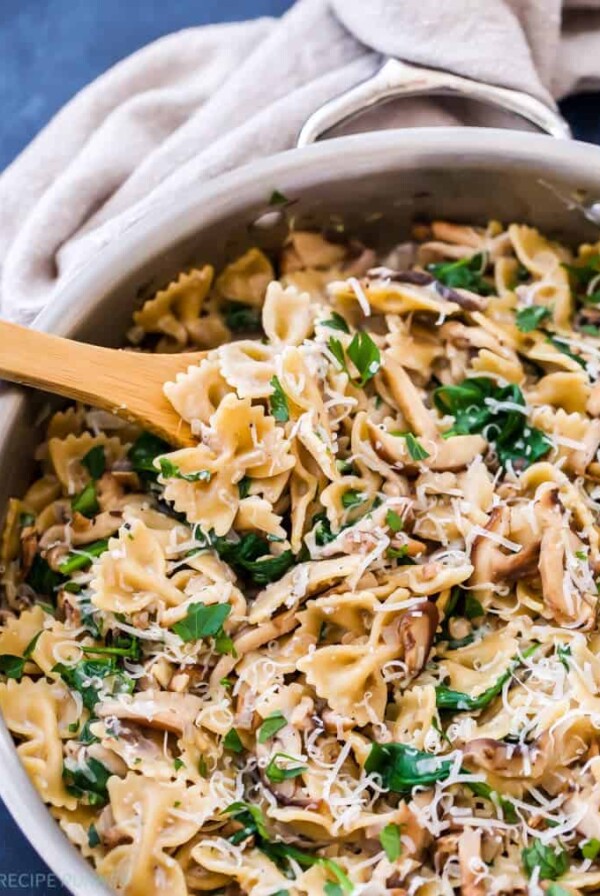This post may contain affiliate links. Please read our disclosure policy.
Nothing says celebration like a perfectly slow roasted prime rib—and you don’t need to be a master chef to pull it off! Prime Rib is the ultimate treat, and it’s one our family looks forward to every Christmas dinner and other special occasions!

Slow roasted prime rib in the oven is absolutely amazing! With this easy recipe, you’ll get tender, juicy, perfectly cooked roast beef that’s sure to impress at your next holiday dinner.
Pair this classic dish with your favorite sides, like creamy twice-baked mashed potatoes, Brussels sprouts au gratin with bacon, or a crisp fresh green bean casserole .
Table of Contents
What Is a Prime Rib Roast?
Prime rib roast is juicy, tender, and absolutely delicious cut of beef, sourced from the rib section of the cow. Known for its rich marbling, it delivers exceptional flavor and a melt-in-your-mouth texture. It’s a perfect choice for holidays and special occasions. This cut combines the ribeye and its surrounding fat, which enhances both its juiciness and depth of flavor. When done right, the exterior develops a savory, caramelized crust, while the interior remains tender and moist.
Despite its name, “prime rib” doesn’t always indicate USDA Prime grade beef. The USDA grades beef into three main categories: “Prime” (noted for exceptional marbling and flavor), “Choice” (a quality, more budget-friendly option), and “Select.” While USDA Prime is the most luxurious and flavorful, a well-cooked Choice prime rib can still make for an amazing meal.

Ingredients You’ll Need
- Prime Rib Roast – The star of the dish, providing a rich, tender, and flavorful cut of meat perfect for roasting.
- Kosher Salt – Enhances the natural flavors of the meat and helps create a flavorful crust.
- Butter (unsalted) – Adds richness and helps keep the meat juicy during roasting.
- Olive Oil – Helps the spices adhere to the meat and promotes even browning.
- Other Spices – Garlic, Pepper, thyme, and rosemary are used to season the roast, adding depth and aromatic flavors to the dish.
How to Choose the Perfect Prime Rib
Start by deciding whether you prefer bone-in or boneless prime rib and determining the right amount to serve. Here’s a simple rule of thumb:
- Bone-In Roast: Plan for 1 pound per person. The bones add weight, but they also contribute to flavor and make an impressive presentation.
- Boneless Roast: Plan for ½ to ¾ pound per person since there’s no bone to account for, and all the weight is edible meat. Boneless is easier to slice and cooks slightly faster.
If you’re offering a variety of side dishes, aim for the lower end of these estimates. For larger appetites or fewer sides, it’s best to round up. After all, it’s always better to have a bit extra for leftovers!
Expert tip: Visit your local butcher! They can trim any excess fat, tie the roast for even cooking, and cut the perfect size for your gathering.
How to Cook Prime Rib
Slow roasting is my go-to method because it ensures even cooking while preserving the meat’s natural juices, delivering a tender and flavorful roast every time. Here’s how to do it:
- Bring to Room Temperature: Take the beef out of the fridge and season it on all sides with salt. Cover it loosely with plastic wrap for at least 2 hours before removing.
A room-temp prime roast cooks evenly, preventing an overcooked exterior and ensuring a perfect, tender result. - Prepare the Roast: If your roast isn’t tied, regardless of bone-in or out, tie it up with cooking twine between the ribs. This holds the meat and it’s juices together during cooking! Then, mix up a simple butter rub with olive oil, garlic, and your favorite seasonings. Generously coat the roast with the rub.
- Slow Roasting: Place the roast on a roasting pan or wire rack on a sheet pan. Start by roasting it at a high temperature to brown the outside, then change to a low temperature to finish cooking.
- Cook to Your Preferred Doneness: Use a meat thermometer to check the internal temperature:
- Rare (120°F/50°C): About 15–17 minutes/pound
- Medium Rare (130°F/55°C): About 17–20 minutes/pound
- Medium (140°F/60°C): About 20–23 minutes/pound
- Medium Well (150°F/65°C): About 23–26 minutes/pound
- Rest the Meat: Remove the roast from the oven once it hits your target temp, covering it with aluminum foil. The roast will continue to cook as it rests! Wait 15–20 minutes before slicing to lock in those incredible juices.
- Cut the Roast: If still bone-in, place the roast bone side up on a cutting board. Use a sharp knife to slice along the bones, separating the meat and cutting against the grain.
- Enjoy: Serve your prime rib with the tasty pan juices and soak up the compliments!

Tips for the Best Roast
- Room Temp is Essential: Starting with cold meat can lead to uneven cooking, so don’t skip this step!
- Remove Early: Take the roast out of the oven when it’s about 5°F below your target temperature—it’ll finish cooking as it rests.
- Give It Time to Rest: Resting the meat for 15–20 minutes is a must for juicy, flavorful servings.
- Make the Perfect Pairing: Whip up a creamy horseradish sauce or a rich au jus to complement the prime rib and elevate its flavor.

Storing Leftover Prime Rib
If you’re lucky enough to have leftovers, cool the roast slightly, slice it, and store in an airtight container in the fridge for 3–4 days.
What to Do with Prime Rib Leftovers
Leftovers? No problem! Here are some tasty ideas:
- French Dip Sandwiches: Layer thinly sliced prime rib on a toasted baguette, top with melted provolone, and serve with savory au jus for dipping.
- Morning Skillet: Pair prime rib slices with sunny-side-up eggs and roasted potatoes for a hearty breakfast.
- Prime Rib Tacos: Fill warm tortillas with shredded prime rib, fresh salsa, guacamole, and cilantro
How to Reheat Prime Rib
Gently reheat your sliced roast on the stovetop. Add it to a small pot with leftover au jus or beef stock, warm for about 5 minutes, and enjoy!
Did you try this easy slow roasted prime rib recipe? Leave a recipe rating and review below.

Slow Roasted Prime Rib
Ingredients
- 5 pound bone-in prime rib roast, important to bring to room temperature
- kosher salt
- 3 tablespoons unsalted butter, softened
- 6 cloves garlic, minced
- 2 teaspoons ground black pepper
- 1 teaspoon dried thyme
- 1/2 teaspoon dried rosemary
Instructions
- Remove rib roast from packaging and place it, bones down, in a roasting pan. Season it on all sides with salt, cover it loosely with plastic wrap, and allow it to come to room temperature for 2+ hours.
- Preheat the oven to 500 ℉. Pat the roast down with paper towels.
- Combine softened butter, olive oil, garlic, 1 teaspoon salt, pepper, thyme, and rosemary in a small bowl, mixing until well blended. Remove plastic wrap and spread the mixture evenly over the entire roast.
- Roast the prime rib in the preheated oven for 15 minutes, then reduce the oven temperature to 325 ℉ and continue roasting until desired level of doneness. Use a meat thermometer to check the temperature of the meat:Rare: 120 degrees ℉ (about 15-17 minutes/pound)Medium Rare: 130 degrees F (about 17-20 minutes/pound)Medium: 140 degrees F (about 20-23 minutes/pound)Medium Well: 150 degrees F (about 23-25 minutes/pound)Note: The beef will continue to cook as it rests out of the oven, so remove it from the oven 5-10 degrees before it reaches your optimal temperature.
- Rest: Remove it from the oven and tent it with foil. Allow it to rest for 30 minutes before carving.
- Carve prime rib roast by slicing against the grain into about ½ inch thick slices. Serve with au jus and horseradish, if desired.
Notes
- Bring roast to room temperate before roasting (2+ hours)
- Always use a meat thermometer to check for precise internal temperatures.
- Remove the roast about 5-10°F below your target temperature, as it will rise while resting.
- Let the roast rest for 15-20 minutes before carving for maximum juiciness.
- Store in an airtight container in the fridge for 3–4 days.
Nutrition
Nutrition information is automatically calculated, so should only be used as an approximation.










Easy to follow and clear directions. Looks delicious. Want to try soon!
This looks amazing! Growing up, prime rib was a special treat served at Christmas & this recipe looks very close to what my parents made. The simple step-by-step instructions also takes out the fear factor of messing this up. Can’t wait to make this for our family’s Christmas feast!